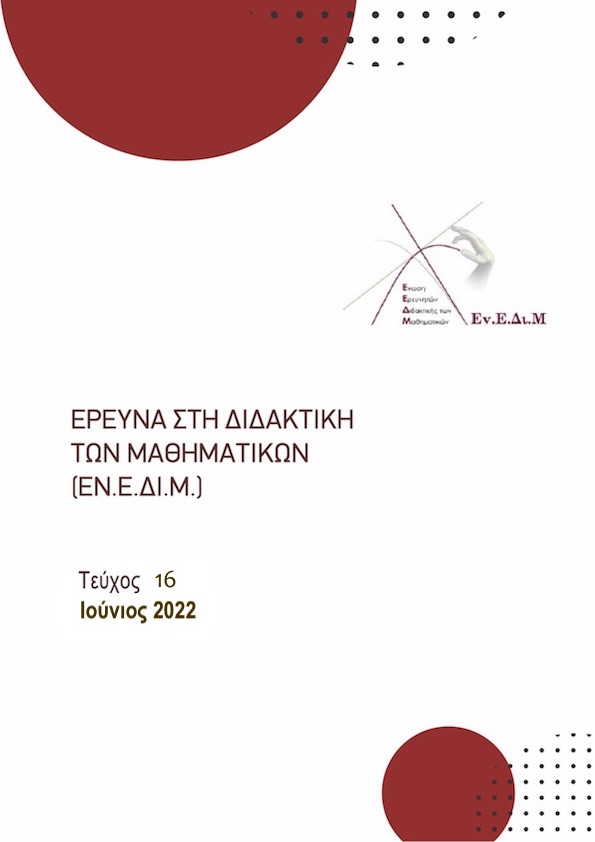ESTIMATE RATIONAL NUMBERS ON THE NUMBER LINE
Abstract
Τhe aim of the present study is to examine the ability of children and adults to estimate rational numbers on the number line. For this purpose, two numberline tasks were designed and presented to 46 Year 6 children and 42 adults asking them to: a) estimate the position of rational numbers on the number line (Number to Position Task) and b) estimate the numerical value of a rational number shown as a mark on the number line (Position to Number Task). Although success rates differed significantly between the two age groups, with the adults performing better (84%) than the Year 6 children (55%), younger participants’ accuracy of estimates was not influenced by the presence of reference points on the number line. Instead, number size (numbers less or more than one), type of rational numbers (fractions and decimal numbers) and type of task (NP, PN) played a key role in participants’ numberline estimations.
Article Details
- How to Cite
-
Δέσποινα (Despina), & Τριανταφύλλου (IRINI TRIANTAFILLOU) Ε. (2022). ESTIMATE RATIONAL NUMBERS ON THE NUMBER LINE. Research in Mathematics Education, (16), 5–25. Retrieved from https://ejournals.epublishing.ekt.gr/index.php/enedim/article/view/29626
- Issue
- No. 16 (2022)
- Section
- Articles

This work is licensed under a Creative Commons Attribution 4.0 International License.
Authors who publish with this journal agree to the following terms:
Authors retain copyright and grant the journal right of first publication with the work simultaneously licensed under a Creative Commons Attribution licence that allows others to share the work with an acknowledgement of the work's authorship and initial publication in this journal.
Authors are able to enter into separate, additional contractual arrangements for the non-exclusive distribution of the journal's published version of the work (e.g. post it to an institutional repository or publish it in a book), with an acknowledgement of its initial publication in this journal.
Authors are permitted and encouraged to post their work online (preferably in institutional repositories or on their website) prior to and during the submission process, as it can lead to productive exchanges, as well as earlier and greater citation of published work (See The Effect of Open Access).



